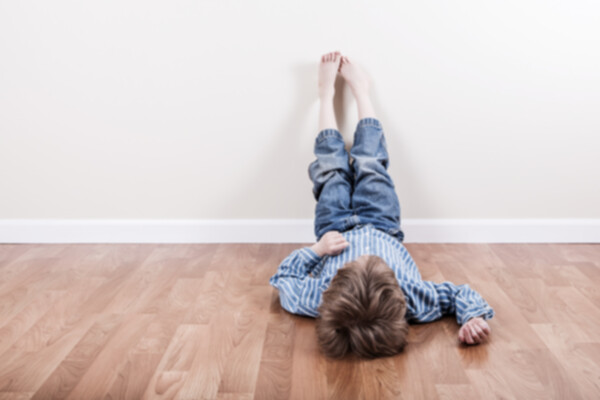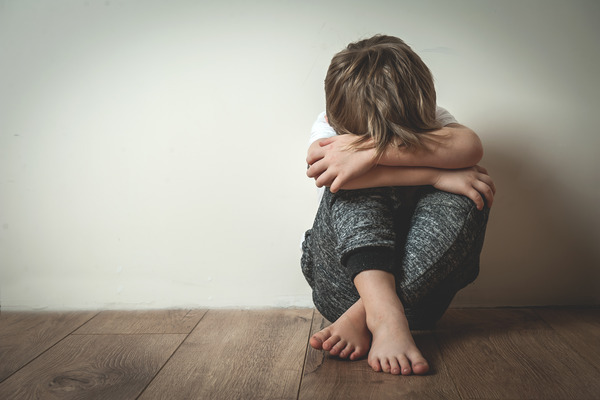Childhood tantrums are one of the moments most feared by parents. Learn the keys to successfully overcome them and why they occur. Discover effective psychological techniques.

Walking down the street, in a supermarket, at home, in a store, in a restaurant or even in a cinema… The places are different but the result of the tantrums It is usually the same: the boy or girl screaming, kicking, crying, flailing, lying on the floor or rigid in their stroller and the parents or caregivers having the hard time at their side.
What are childhood tantrums?
A child tantrum It is a type of reaction characteristic of children between 16 months and three years old. However, it must be kept in mind that they can appear earlier and also disappear later.
It generally consists of a strong attack of uncontrolled anger that includes protests, crying, shouting, falling to the ground, hitting… (it can even cause vomiting). The tantrums They can be described as patterns of crying, screaming or uncontrollable movements common in childhood, which children use to express their anger, disgust or dissatisfaction.
They are forms of immature expression due to the child’s inability to correctly express his needs or concerns, his low tolerance for frustration and difficulty controlling emotions. Holding your breath instead of crying is also considered a tantrum, which is more alarming to parents. In these situations, the child takes a strong breath, holding the air for a while, turning red, later purple, and may even fall.
They appear between the first and fourth year of life and can be considered normal if they only occur occasionally and their duration does not exceed fifteen minutes. It is advisable to consult with a psychologist if it occurs regularly – one or more times a day -, lasts more than a quarter of an hour, or self-harming behavior occurs. On the one hand, the children As they grow, they need greater autonomy (doing things autonomously, making their own decisions…), but at the same time, they continue to need the protection and help of adults in many situations. When both needs collide, they usually generate emotions of anger, sadness and fear in the child, which can explode in tantrums or tantrums.
Why do tantrums appear?
There are some reasons why the children’s tantrums Understanding them can be the most effective way to control them and help our children.
- Frustration: The tantrums in children They are considered part of their normal maturation process and usually originate in moments of frustration for not being able to impose their will or for feeling misunderstood. The child tries to manage his anger but does not yet have the necessary resources to do so.
- Emotional conflict: In many cases the tantrums in children They may appear due to the emotional conflict they suffer: parents do not understand what is happening and usually get angry with the little ones; They perceive that they are confronting the people they love the most (ambivalence of feelings). The child wants something and does not understand why they do not want to give it to him and this can generate a certain rejection towards the adult at that moment.
- Satisfy wishes: With the tantrums the child tries to get attention in order to satisfy his desires, so these will be favored if the parents’ behavior yields to his requests since the child will see his objectives fulfilled.

How to manage tantrums in children?
Now that we can understand what they are and why they occur, how do we act? What can we do so that the child and we do not have such a bad time? Controlling children with tantrums It is one of the common problems that new parents have. Even so, there are some psychological guidelines that can help you stop these tantrums in children.
- Discover the reason: The first step to control a child screaming or one of these child tantrums, is trying to discover the cause of the tantrum. Therefore we must understand the reason for the anger (know why our child may be reacting this way).
- Do not act impulsively: Self-regulate our emotions (anger, shame…) before acting impulsively or excessively before his tantrum One of the best ways to control tantrums in babies or children is to demonstrate the emotional balance of the parents.
- Do not try to dialogue when it arises: Do not try to dialogue in the peak phase of anger (only when he has calmed down and can listen to us). The only thing that will do is try to talk to them while you are in full huff will be to make it intensify.
- Do not scream: If we scream we will cause a increased tantrum and we are showing him that doing so is a strategy to make others pay attention to us.
- Let him calm down to talk: Let him/her calm down and then talk to him/her (initially ignore the huff, but show him that we are there as soon as he calms down slightly) At this moment it is essential to offer physical contact if we see that this helps him calm down (depending on the child; there are those who reject all types of contact and others who find it much easier to regulate).
- Give strategies to control your emotions: A way to make the tantrums stop happening is to offer some strategy so that he can regulate his emotions when he is calmer (squeezing a soft doll tightly, going to the room or a “calm” corner…).
- Do not give in to requests: Do not give in to your requests with a tantrum (that it is not his “language” to ask for things) Although feelings of guilt may appear, this point is very important, since if the child ever sees that with the tantrum he gets what he wanted, he will probably use it on future occasions as a strategy.
We must keep in mind that there are children who react very aggressively during the tantrums and they may end up hurting themselves or breaking something around them. In these cases, the child must be protected from the environment when we see that the tantrum is starting. Dangerous objects or objects that could cause harm should be collected or moved away, and in the event that the child self-harms (hitting himself or crashing into something), we should intervene calmly so that he does not continue doing so.
It is very important that with all this, our children understand that even if they have tantrums we understand them and that even though we sometimes disagree, we are not angry, nor will we change our opinion about them.
How to prevent tantrums in children?
What can we do to prevent more tantrums in the future? As we have said, it is an evolutionary process that children must go through. However, there are individual differences between children (there will be some who get frustrated more quickly and therefore have more tantrums and others who hardly have them), and there are also certain aspects that can be enhanced in the child, working on frustration with him.
- Detect the first signs: Detect those signs or situations that precede the tantrum (if he is tired or hungry, if we go to that place he hates…) and plan how we can act before he arrives (offer him a relaxing bath, listen to calm/upbeat music or eat something, offer him a distraction, treat the situation with humor…).
- Be a little more flexible: Also to make it easier to accept the rules without modifying our own limits we can be a little flexible in some situations (e.g. you must eat what you don’t like before playing, but nothing happens if you do it with your hands, you have to You have to leave the house warm in winter, but it’s okay if you don’t initially put on gloves and a hat…). Many times the rules we impose have different levels of importance and we can play with them so that the child progressively accepts them. no tantrums or with lighter anger.
- Boost positivity: Help with other positive stimuli to facilitate acceptance (e.g. I understand that you want to stay in the park longer playing, but we have to go home now; mom/dad will be waiting for us and can read you your favorite book).
- Propose alternatives: In this sense, proposing alternatives whenever possible can also be a good strategy (e.g. now you can’t do this, but you can do that…). and propose the “rule or norm” in an affirmative way, without using a “no” (e.g.: “when you do those we can go out”/ instead: “if you don’t do that you don’t go out”).
These small strategies will make it easier for our children to accept us in front of them. moments of frustration and they will also make our day-to-day life with them easier.

How to eliminate childhood tantrums?
There are different psychological methods that can help you eliminate these children’s tantrums Even so, when these persist over time, it is important to consult with a child psychologist to find the reason for these anger attacks in our children. To eliminate them, different techniques are used: extinction, positive reinforcement, the contingency contract and the token economy.
- The extinction: It is the most suitable technique to eliminate any type of excessive behavior, including tantrums or excessive crying. It consists of ignoring the child’s tantrums, especially if they occur to attract attention or to demand something. We will need to have large doses of patience because, in the first days, the tantrums will increase. We must keep in mind that, up to this point, it has been the tool that the child has used to get what he wanted and he has not yet acquired new resources, so he will try his tactic again and again. It is also very important that we do not give in (except in cases where there may be a risk of injury) and continue to turn a deaf ear to his cries, since if we do, we will only be teaching him that, sooner or later, his method will work and we will have precious time wasted: a single “lapse” can destroy the effort and work of several days.
- Positive reinforcement: It is indicated to increase low frequency behaviors. In our case, we want to positively reinforce the moments or situations in which the child uses resources other than the tantrums and crying to get what he wants. How and when should we do it? Every time, and at the same moment, the child makes a request, expresses a different point of view or expresses dissatisfaction in the correct way, we must congratulate him and, if possible, grant it. In positive reinforcement it is very important not to ignore the child when he is carrying out the action and not to postpone congratulations, which must be immediate. Likewise, and in front of the child, we will explain his good performance to the maximum number of people possible: to the siblings, the father, grandparents…, and even his/her teacher if you have the opportunity.
These may be some tips for alleviate tantrums or tantrums in children of your kids. Even so, it is vitally important to understand why they happen and try to help children mature emotionally.








